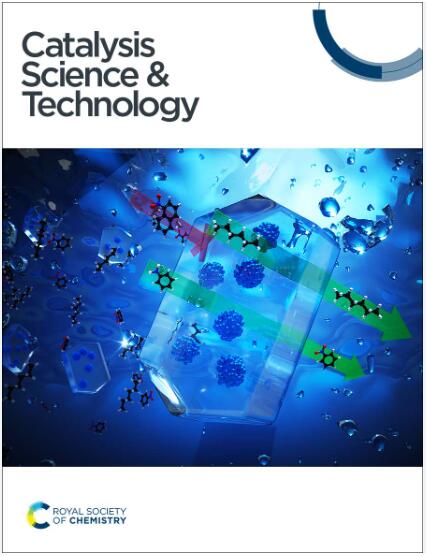用机器学习优化轻石蜡氢解镍基催化剂
IF 4.4
3区 化学
Q2 CHEMISTRY, PHYSICAL
引用次数: 0
摘要
在本研究中,利用机器学习方法对镍基碳氢化合物氢解催化剂进行优化。在文献数据的基础上,对催化剂组成、载体类型、表面积、还原温度、反应条件等关键参数进行了研究,编制了419个实验的综合数据集。我们采用随机森林模型预测反应速率,平均绝对误差为0.37,R2值为0.76。根据模型提出的Ni基催化剂最佳合成参数,合成了Ni/Al2O3和Ni/TiO2两种催化剂。实验证明了预测和观察到的反应速率之间的良好一致性,而且,在模型学习中考虑到,这些催化剂似乎比所有其他镍基催化剂更活跃。这意味着这样的模型不仅能够插入现有的信息,而且还能够在一定程度上创造出超越当前科学成就水平的改进催化剂,尽管仍然严格保持在现有的知识范围内。当研究人员开始研究他们不熟悉的反应或催化剂时,提出的方法可能会对他们有所帮助。提出的方法的另一个可能的研究应用是催化剂的分类,包括潜在的有前途的新方法的指示。本文章由计算机程序翻译,如有差异,请以英文原文为准。
Optimization of nickel-based catalysts for hydrogenolysis of light paraffins using machine learning†
In this study, optimization of nickel-based catalysts for the hydrogenolysis of hydrocarbons using machine learning methods. A comprehensive dataset comprising 419 experiments was compiled on the basis of literature data, focusing on key parameters such as the catalyst composition, support type, surface area, reduction temperature, and reaction conditions. We employed a random forest model to predict the reaction rates, achieving a mean absolute error of 0.37 and an R2 value of 0.76. Two Ni/Al2O3 and Ni/TiO2 catalysts were synthesized following the model recommendations on the optimal synthesis parameters for Ni-based catalysts. Experiments demonstrated excellent agreement between predicted and observed reaction rates and, moreover, these catalysts appeared to be more active than all other Ni-based catalysts, considered at the model learning. This means that such a model is capable not only of interpolating existing information, but also of creating improved catalysts to some extent exceeding the current level of scientific achievements, though still remaining strictly within the existing knowledge set. The proposed approach may be helpful to researchers when they start working with a reaction or a catalyst which is unfamiliar to them. Another possible research application of the proposed approach is classification of catalysts, including indication of potentially promising new approaches.
求助全文
通过发布文献求助,成功后即可免费获取论文全文。
去求助
来源期刊

Catalysis Science & Technology
CHEMISTRY, PHYSICAL-
CiteScore
8.70
自引率
6.00%
发文量
587
审稿时长
1.5 months
期刊介绍:
A multidisciplinary journal focusing on cutting edge research across all fundamental science and technological aspects of catalysis.
Editor-in-chief: Bert Weckhuysen
Impact factor: 5.0
Time to first decision (peer reviewed only): 31 days
 求助内容:
求助内容: 应助结果提醒方式:
应助结果提醒方式:


